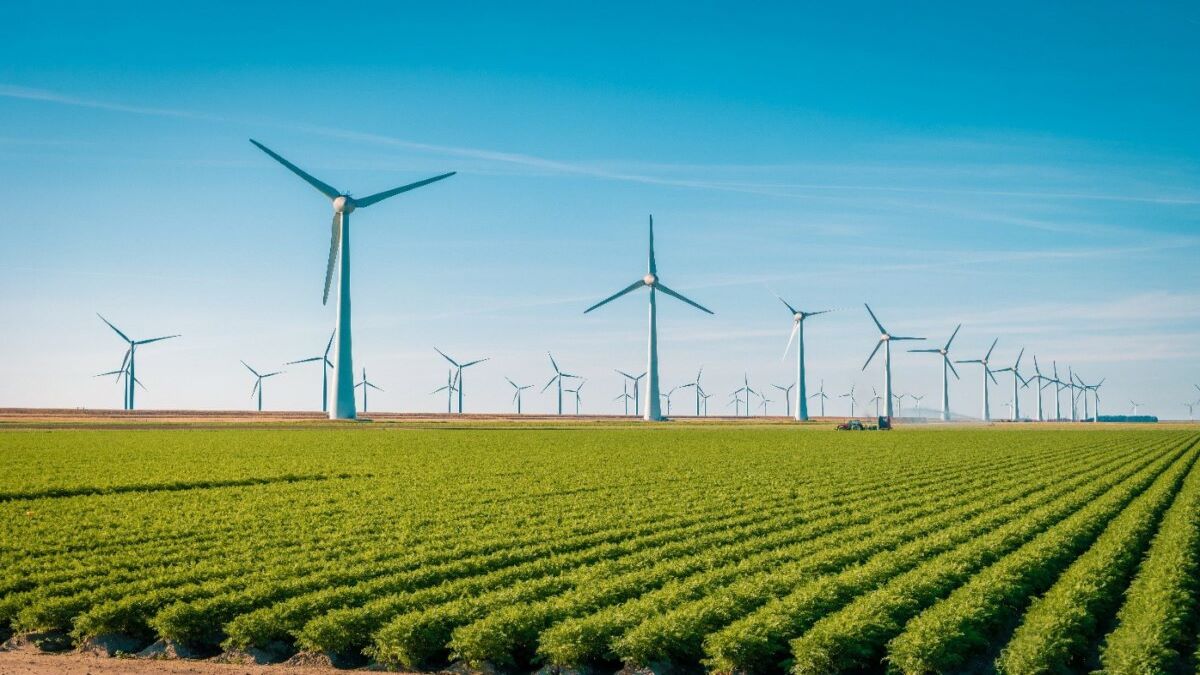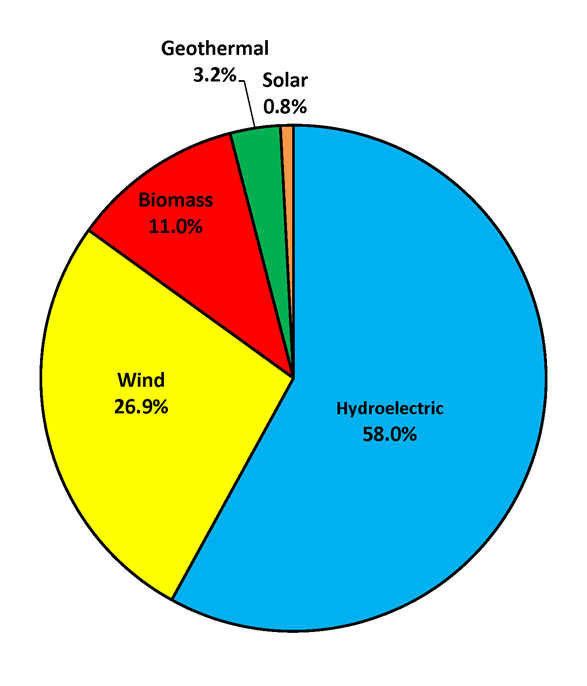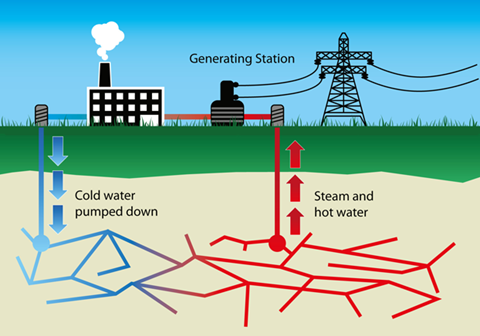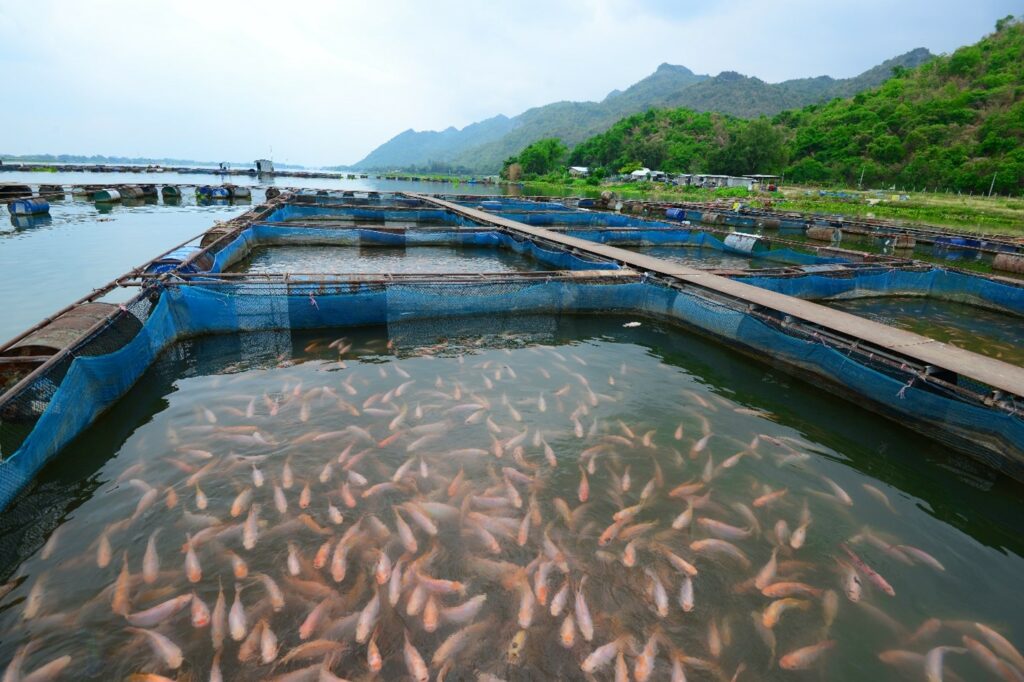
March 4, 2021
How subsurface thermal conductivity can impact the retrieval of geothermal energy and the application of this natural resource in the agriculture industry.
The agriculture and food processing industry dominate the global market as one of the largest and most resource demanding in the world. This industry consumes roughly one third of all global energy production with an estimated 12% being used for crop production and nearly 80% for processing, distribution, retail, preparation, and cooking (FAO, 2010).
They also account for 80-90% of global freshwater use, where 70% of this water is used for irrigation purposes alone (Hoff, 2011). These statistics label the agriculture and the agri-food supply chain as one of the most environmentally harmful industries in terms of promoting climate change and over exploiting natural resources.
The productivity of the agriculture industry is mainly determined by the availability of water, energy, and land resources. As the global population continues to grow exponentially, so does the demand for these resources. These industries rely heavily on fossil fuel production, so much so that when there is a spike in crude oil prices, the average price of a box of cereal will increase as well.
To reduce the damaging environmental impacts caused by this over-use non-renewable resources, the agriculture and agri-food supply chain would need to become independent from fossil fuel production. Replacing the use of fossil fuels with a variety of renewable energy sources would lead to an increase in global food security and a reduction in climate change.
Obtaining secure, accessible, and environmentally friendly supplies of energy, water and food should become an immediate priority for this industry before it continues to inflict irreversible damage on the environment.

Figure 1: National renewable energy use in the USA
The agriculture and agri-food supply chain are constantly challenged by an increasing demand due to the exponentially growing human population and a lack of available resources creating an ongoing struggle for producers trying meet consumers’ needs.
These industries must meet massive production demands while still attempting to adapt to climate change and reduce greenhouse gas emissions. The development of renewable energy sources such as solar, wind and geothermal have the potential to reduce production costs and minimize environmental impacts.
Geothermal energy is one of the most consistent and powerful renewable resources that has just recently been utilized within the agriculture industry. Geothermal energy is classified as heat derived from within the earth’s crust. Technically speaking, it is the thermal energy contained within the rock and fluid that fills the pores and fractures within the earth’s crust.
It can be accessed by drilling large holes into ground reservoirs to extract steam and hot water. The hot water and steam are brought to the surface where they are used to power a wide variety of different applications. Thermal energy determines the temperature of matter.
Most geothermal energy originated from the initial formation of the planet as well as radioactive decay of materials. Geothermal energy is cost effective, renewable, reliable, and sustainable but historically has been limited to areas that are located near a tectonic plate boundary. Recent technology has dramatically expanded the range and accessibility of this resource especially for frequently used applications such as home heating.
Geothermal wells still release a trace amount of greenhouse gas that was trapped deep within the earth; however, these emissions are substantially lower compare to those produced by conventional fossil fuel energy.

Figure 2: Simple diagram depicting the basic processes involved in the retrieval of geothermal energy
The thermal conductivity of the bedrock material is an extremely important parameter for geothermal modelling since it directly controls the steady state temperature field. The thermal conductivity of the ground can have a dramatic impact on a geothermal heat exchangers operating temperature and overall performance.
Thermal conductivity describes a materials ability to effectively transfer heat through the process of conduction and varies among geothermal materials from 0.5 W/(mK) to 8 W/(mK). Although this is a relatively narrow range of values, most geothermal systems are extremely sensitive to the thermal conductivity of a substrate.
For example, the length of a drilled hole required to fulfill the energy needs of a building can increase by more than 50% for a geological material with a low subsurface thermal conductivity 2 W/(mK), compared to a material with a high thermal conductivity of 6 W/(mK). Drilling can be an expensive process and knowing the thermal conductivity of the subsurface material can help obtain the most accurate drilling length to suit the amount of energy required.
The use of geothermal energy is slowly starting to become more prevalent in the agriculture and food industry. This form of renewable energy is typically used for heating and cooling buildings, soil and water (including water for aquaculture), drying crops and grains and for heating greenhouses.
Many common applications of geothermal energy are similar to those of solar energy; however, geothermal energy is available 24 hours a day, 365 days a year making it more convenient to access than solar especially at higher latitudes that receive less daylight. By the end of 2014, the global use of geothermal energy had increased by over 24%.
Globally, 4.5% of geothermal energy is used for greenhouses and open ground heating, 2% for aquaculture, 1.8% for industrial processes and 0.4% for drying.

Figure 3: Example of an aquaculture farm
Thermal regulation of greenhouses is an example of how replacing traditional heating methods with geothermal energy can benefit the environment and substantially reduce costs for the producer. Geothermal heating employs heat through the soil or air replacing and adapting heaters which would normally be powered by electricity or fossil fuels.
World-wide use of geothermal energy for heating greenhouses has seen an increase of over 15% from 2010 to 2015. Geothermal systems can also be considered a solution to freshwater production as irrigation is currently the largest freshwater consumer in the world.
Desalination of geothermal water is an easy way to secure high quality fresh water that can be used for a variety of applications. Space heating (and cooling) is an important energy consumer in the food production industry, especially in pig and poultry farming. These mechanical or evaporative cooling cycles are mainly carried out in a closed building that requires a constant temperature and air quality for promoting optimal health and growth of animals.
Employing a non-renewable resource such as fossil fuels to replace contaminated indoor air can require a tremendous amount of energy most of which can be obtained using geothermal or solar powered air/space dehumidifiers and heaters.
The drying of crops, grains and animal products is one of the most versatile and simplistic applications of geothermal and solar energy currently being practiced in the food and agriculture industry. These drying processes can range from “do it yourself” methods to complex industrial sized geothermal powered dehydrators.
In contrast to solar drying, geothermal energy can be derived in areas that receive little solar radiation such as at higher elevations and colder climates. Fifteen countries have reported that they are currently using geothermal energy on an industrial scale for drying various grains, vegetables, and fruit crops. Some examples include seaweed, onions, wheats, and cereals. The largest consumers of this renewable resource for drying purposes are China, Hungary, and the USA.

Figure 4: Dried fruits and nuts similar to those dried using geothermal processes.
Geothermal energy is a limitless and renewable resource that is independent of a changing climate, weather conditions and can be used 365 days a year. Replacing conventional non-renewable energy sources in the agriculture and food production industry would dramatically reduce costs and minimize harmful environmental impacts.
Theoretically, the earth’s geothermal resources could supply enough energy to satisfy humanities energy needs, however, only a small fraction of this energy may be profitably exploitable. Drilling and exploration for these resources can initially be expensive and many companies and producers lack the motivation to stray from “the norm” and disrupt their production lines.
Despite the initial investment that is required for switching from fossil fuels to geothermal energy, overall, the use of this renewable resource in the agriculture industry has substantially increased over the past couple decades. As new machines and technologies continue to be designed and engineered, the use of geothermal energy will continue to grow within the agriculture and food processing industry.
Book series page. (2017). Sustainable Energy Developments Geothermal,Wind and Solar Energy Applications in Agriculture and Aquaculture, 361–362. doi: 10.1201/9781315158969-17
FAO (2011b) The state of the world’s land and water resources for food and agriculture (SOLAW) – managing
systems at risk. Food and Agriculture Organization of the United Nations, Rome, Italy and Earthscan, London, UK.
Hoff, H. (2011) Understanding the nexus. Stockholm Environment Institute (SEI), Stockholm, Sweden. Available from: http://www.water-energy-food.org/documents/understanding_the_nexus.pdf [accessed August 2016].
Martens, S., Hangx, S., Juhlin, C., KuHN, M., Kempka, T. 2017. Energy, resources and the environment: meeting challenges of the future. Energy Procedia. 125: 1-5. https://doi.org/10.1016/j.egypro.2017.08.301.
Book series page. (2017). Sustainable Energy Developments Geothermal,Wind and Solar Energy Applications in Agriculture and Aquaculture, 361–362. doi: 10.1201/9781315158969-17
Raymond, J. (2018). Colloquium 2016: Assessment of subsurface thermal conductivity for geothermal applications. Canadian Geotechnical Journal, 55(9), 1209–1229. doi: 10.1139/cgj-2017-0447
Sipio, E. D., Chiesa, S., Destro, E., Galgaro, A., Giaretta, A., Gola, G., & Manzella, A. (2013). Rock Thermal Conductivity as Key Parameter for Geothermal Numerical Models. Energy Procedia, 40, 87–94. doi: 10.1016/j.egypro.2013.08.011